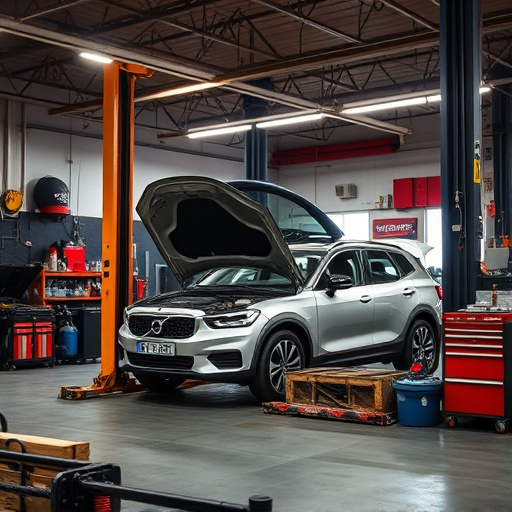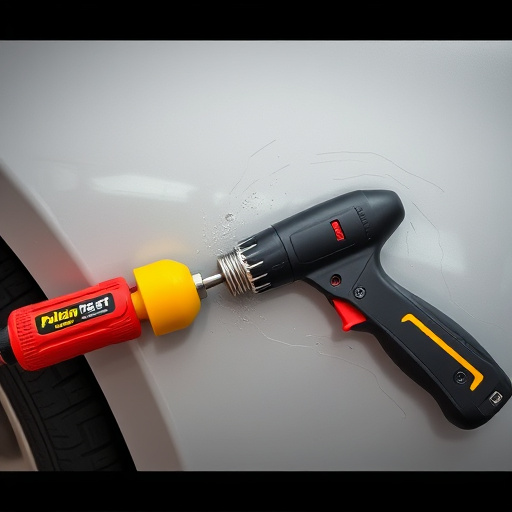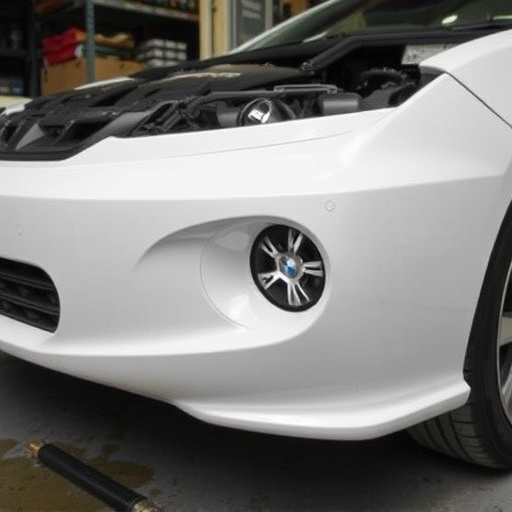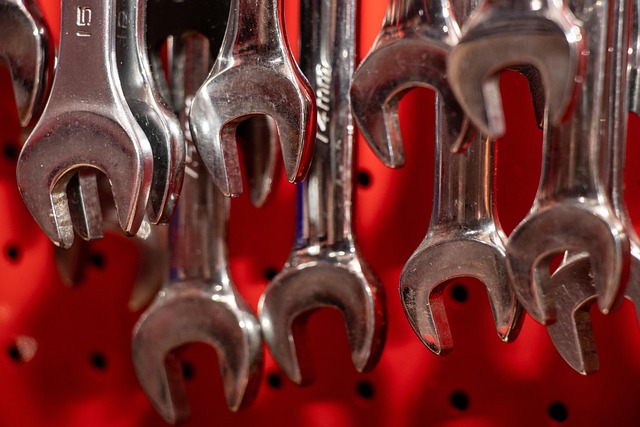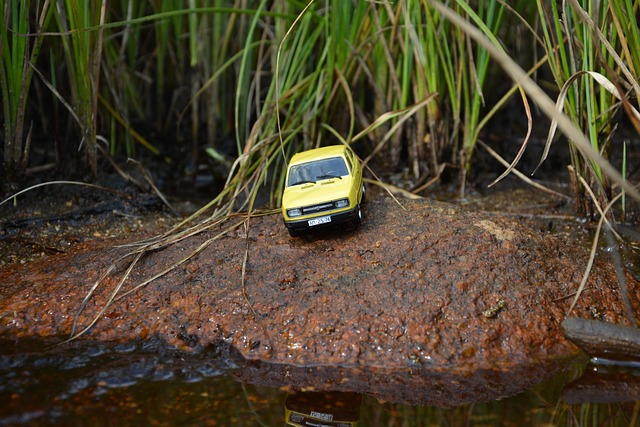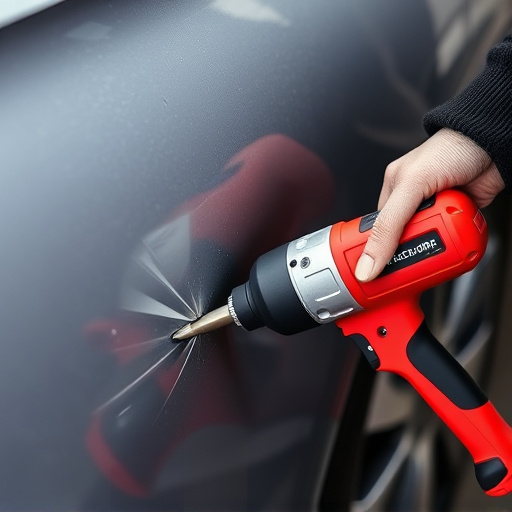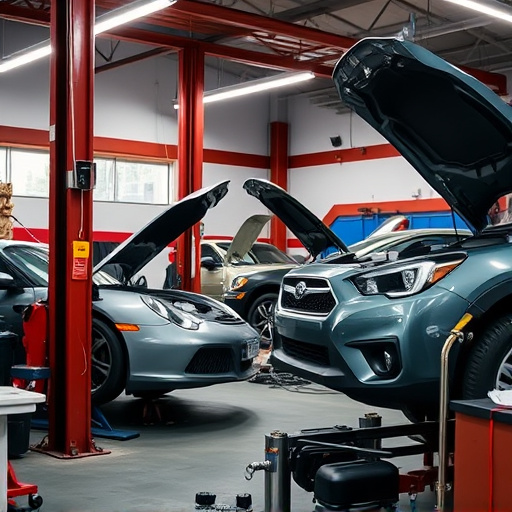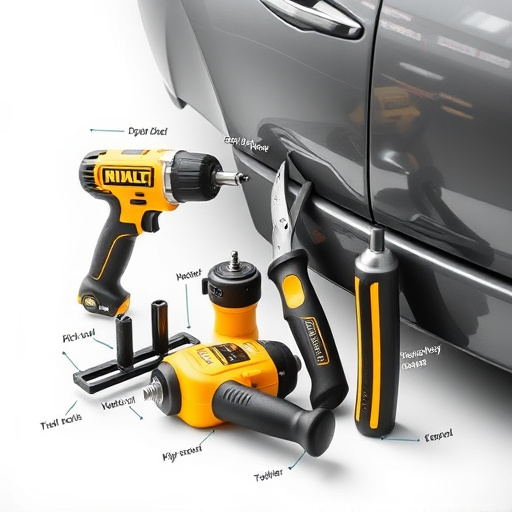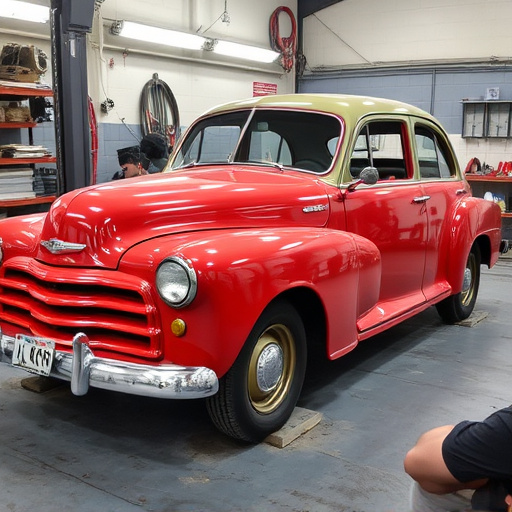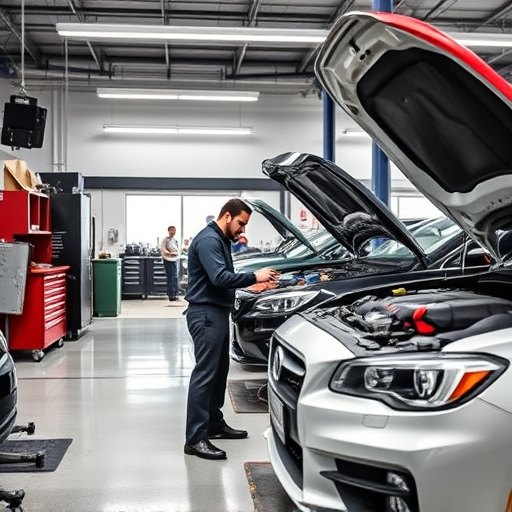Wheel arch replacement is a specialized automotive process repairing or replacing structural components that house wheels and tires, addressing damage from accidents, debris, or corrosion. Trained technicians perform this task using precise techniques at collision centers or auto body shops to ensure seamless fit and restoration of original condition. Quality Assurance (QA) protocols are critical for verifying structural integrity and aesthetic appeal, preventing compromises and enhancing road safety. Adhering to best practices, including alignment, fitment, inspection, and maintenance, ensures high-quality, long-lasting results in automotive collision repair.
Wheel arch replacement, a specialized automotive procedure, involves the meticulous exchange of a vehicle’s worn or damaged wheel arch. This process not only enhances aesthetics but plays a pivotal role in quality assurance, ensuring structural integrity and safety.
This article delves into the fundamentals of wheel arch replacement, highlights its significance within quality assurance processes, and offers best practices to guarantee exceptional outcomes both during and after installation.
- Understanding Wheel Arch Replacement: A Basic Overview
- The Role of Quality Assurance in Wheel Arch Replacement
- Best Practices for Ensuring Quality During and After Installation
Understanding Wheel Arch Replacement: A Basic Overview

Wheel arch replacement is a specialized process within the automotive industry, focusing on repairing or replacing the wheel arch, a structural component that houses and protects the wheels and tires of a vehicle. It’s a crucial aspect of auto body repair and auto detailing, especially after accidents or wear and tear. The wheel arch, also known as the fender well, can suffer damage from impacts, debris, or corrosion, compromising both the vehicle’s aesthetics and safety.
In a collision center or dedicated auto body shop, trained technicians employ precise techniques to replace damaged wheel arches, ensuring a seamless fit and restoration of the vehicle’s original condition. This involves meticulous measurement, cutting away the damaged arch, and installing a new one, often made from durable materials like steel or composite plastics. A successful wheel arch replacement not only enhances the car’s appearance but also reinforces structural integrity, addressing potential safety concerns that could arise from prolonged neglect of damaged fender wells.
The Role of Quality Assurance in Wheel Arch Replacement
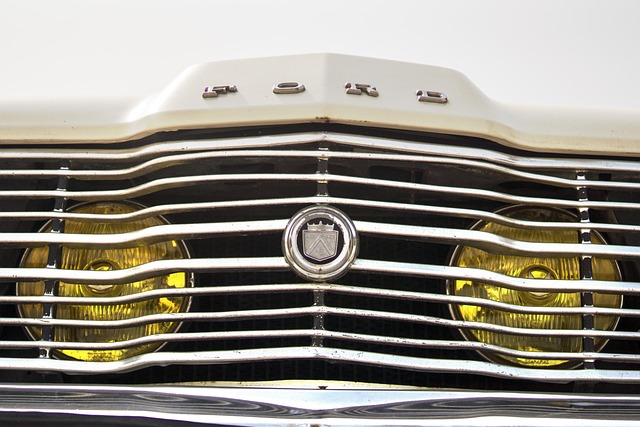
Quality Assurance (QA) plays a pivotal role in ensuring the success and safety of wheel arch replacement procedures. It acts as a crucial safeguard, verifying that each component of the process adheres to the highest standards. This involves meticulous inspection at every stage, from the initial assessment of the damaged wheel arch to the final fitting of the new, expertly repaired or replaced part. The primary goal is to prevent any compromises in structural integrity and aesthetic appeal.
In a reputable collision repair shop or fender repair centre, QA processes are integral to delivering top-notch car bodywork services. It ensures that skilled technicians follow proper procedures, utilizing advanced equipment for accurate measurements and precise repairs. By implementing rigorous QA protocols, these shops not only maintain customer satisfaction but also contribute to road safety by minimizing the risk of future issues related to wheel arch structural integrity.
Best Practices for Ensuring Quality During and After Installation
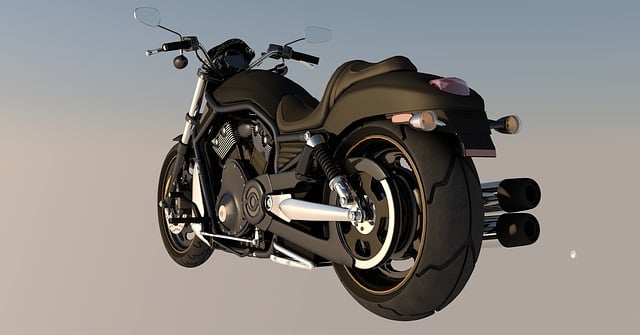
When carrying out a wheel arch replacement, adhering to best practices is paramount to ensure both quality and longevity of the work. During installation, meticulous attention should be paid to alignment and fitment, using precision tools and following manufacturer guidelines rigorously. This includes ensuring all panels are correctly positioned, gapped, and secured, with no visible signs of misalignment or gaps exceeding the acceptable tolerance.
Post-installation, comprehensive quality assurance checks are vital. These include inspecting the welds for strength and integrity, verifying the accuracy of paintwork and finishes, and ensuring proper sealing to prevent water intrusion. Regular maintenance inspections can also help identify potential issues early on, whether it’s a loose panel or signs of rust formation. Incorporating these practices into the automotive collision repair process guarantees that car bodywork services meet the highest standards, ultimately enhancing vehicle aesthetics and safety.
Wheel arch replacement is not just a mechanical process, but a critical quality assurance step for vehicle aesthetics and safety. By understanding the role of each stage, from basic installation to post-replacement checks, professionals can ensure optimal results. Adhering to best practices not only enhances vehicle performance but also safeguards against potential issues, ensuring customer satisfaction and maintaining high standards in the automotive industry. This comprehensive approach to wheel arch replacement is essential for achieving long-lasting, visually appealing, and safe vehicle conditions.
